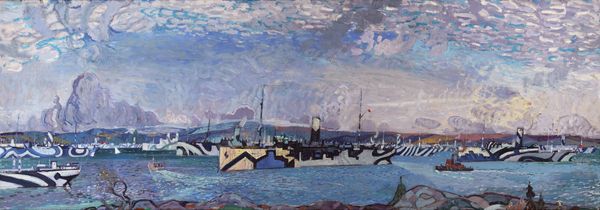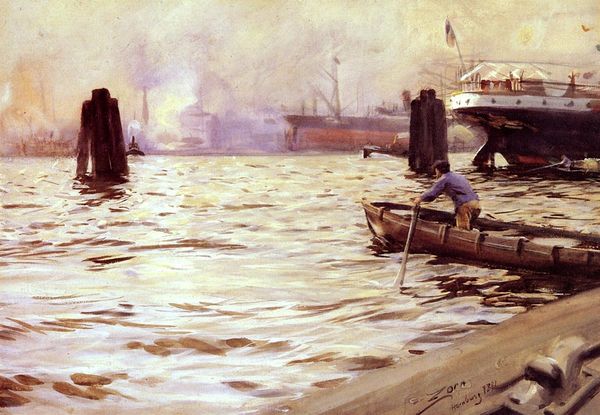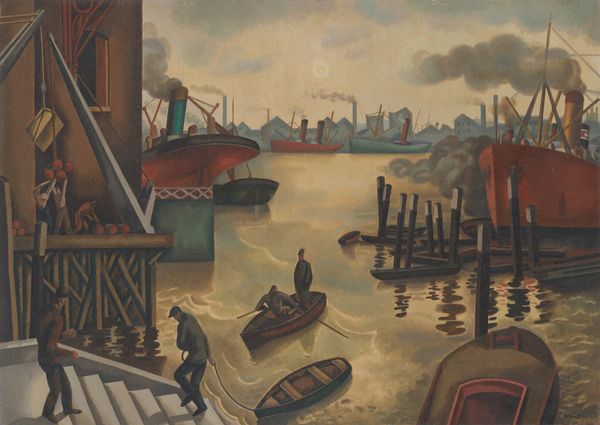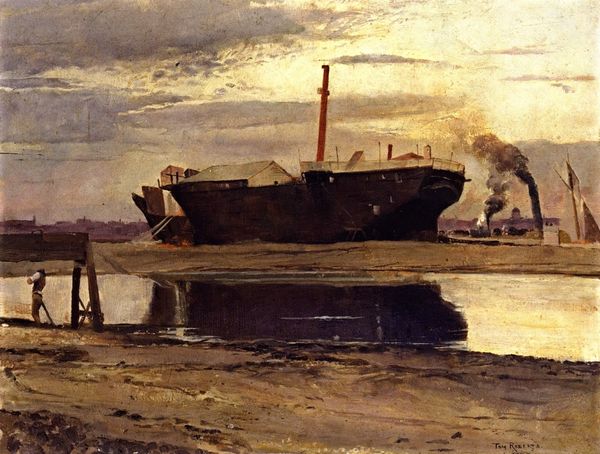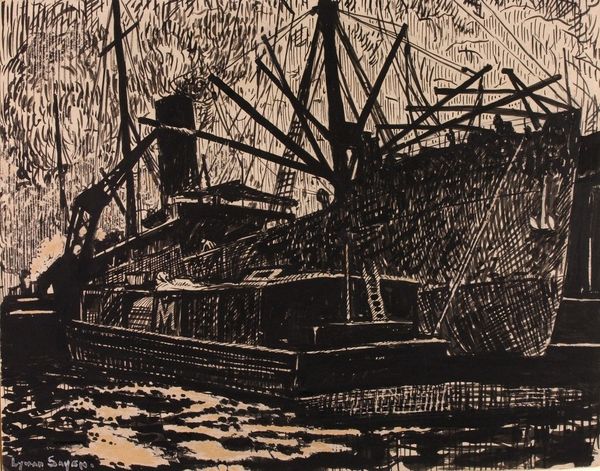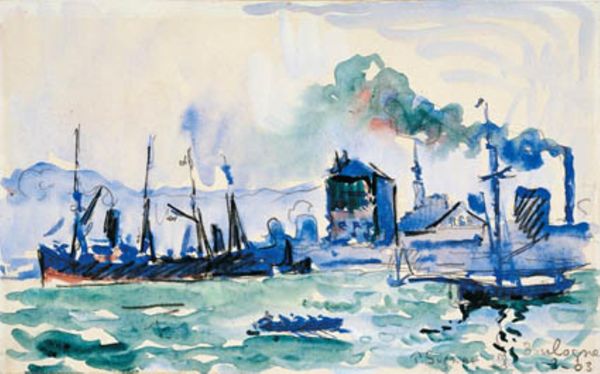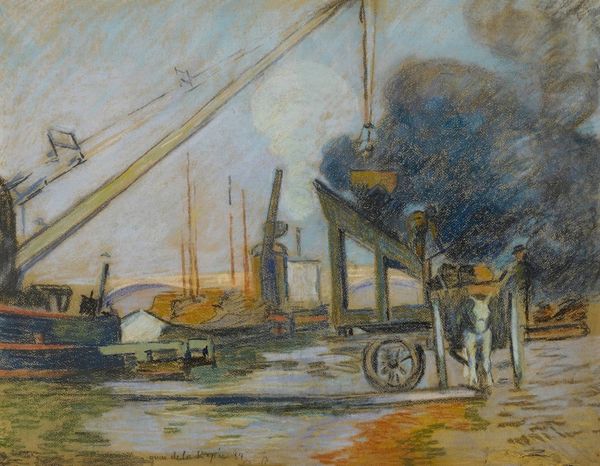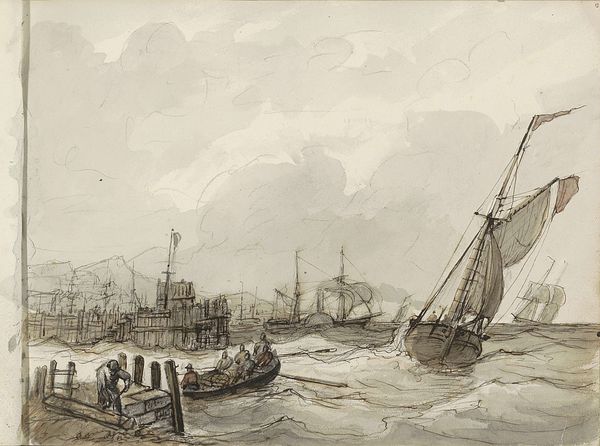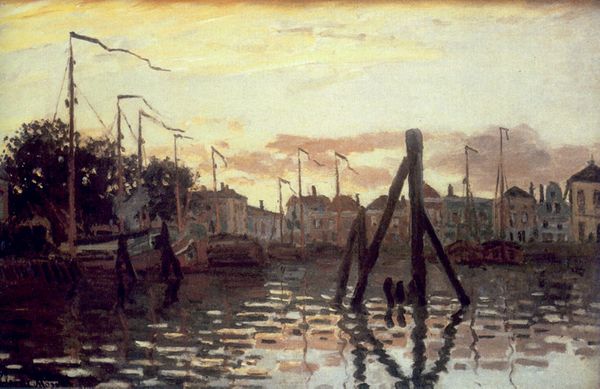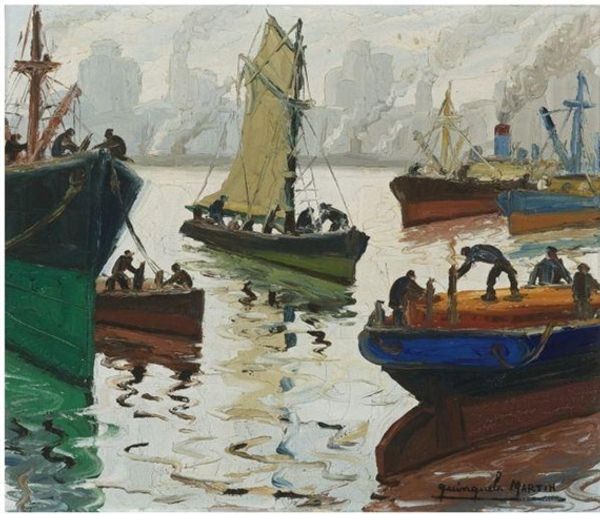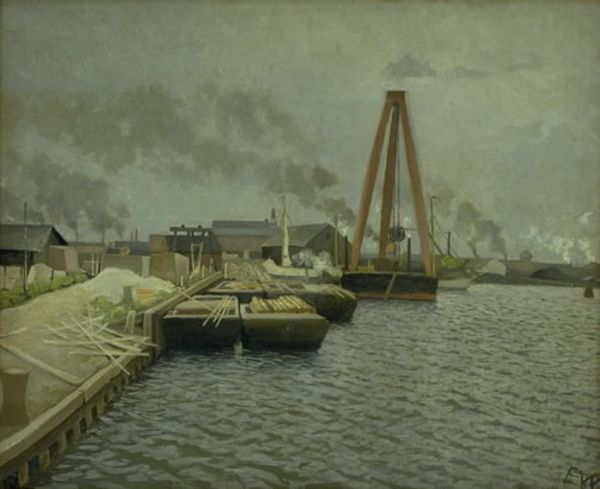
Copyright: Public domain US
Curator: Auguste Herbin's "Hamburgs port", painted in 1907 using oil paint, depicts a bustling harbour scene. What strikes you first? Editor: The smoke, definitely. It's like the city's exhaling, this murky breath of industrial energy, or maybe its holding its breath just before it all becomes unmanageable. It sets an interesting mood. Curator: Indeed. Notice the structural economy of Herbin's approach. He renders the complex port activity through a system of flattened planes and simplified forms, moving towards abstraction. This use of line and shape foreshadows his later geometric style. Editor: Exactly! The lines are almost… child-like. There's a raw energy in that simplicity. Almost like he’s bypassed all the academic rigmarole to go straight for the emotional truth of being there, in the midst of it all. And the limited colour palette – earth tones and grays really emphasizes this. It makes it seem like you could smell the brine and diesel. Curator: The Post-Impressionist influence is unmistakable here, too. The broken brushstrokes used to construct the water's surface disrupt any sense of illusionistic depth. Instead, Herbin calls attention to the materiality of the painting itself, pushing it towards surface and objecthood. Editor: Do you think the boats appear so prominent to represent movement, a sense of adventure, to reach further destinations? Or simply, as vessels involved with international commerce, goods moving from port to port in their usual routes? Curator: It’s both, perhaps. In foregrounding these ships, he captures the dynamism of early 20th-century urban life while subtly alluding to broader global connections and trade networks. There is also an ominous undertone given to the massive scale and somber hues that would signal more significant ships of war more than just commerce and passenger vessels. Editor: Absolutely. Herbin doesn’t just paint a picture; he creates a presence, an event, and a mood. The ships become this looming element. It leaves you slightly unsettled. Curator: Well articulated. A close reading shows that this landscape captures the temporal intersection of artistic influences with budding modernity. Editor: It does. Thanks to you, now I perceive that what had originally appeared to me as raw energy and intuition also shows considerable construction.
Comments
No comments
Be the first to comment and join the conversation on the ultimate creative platform.
